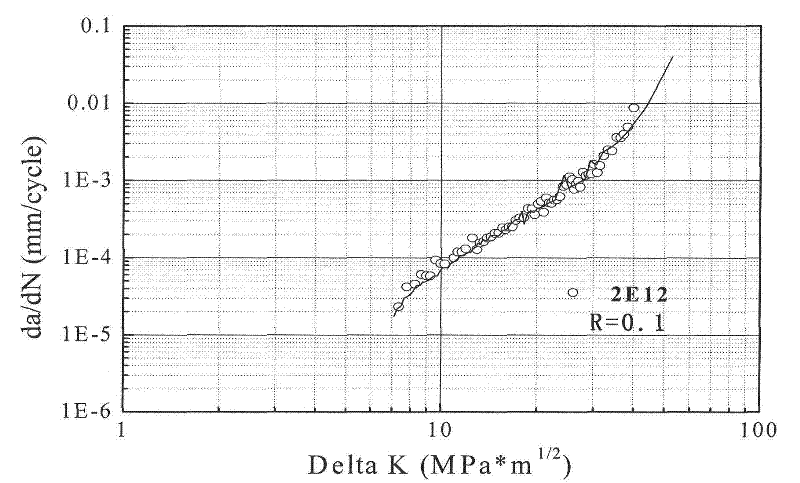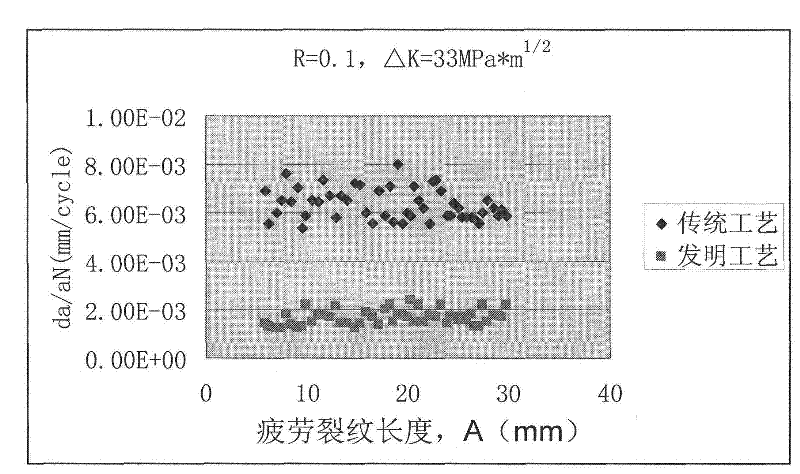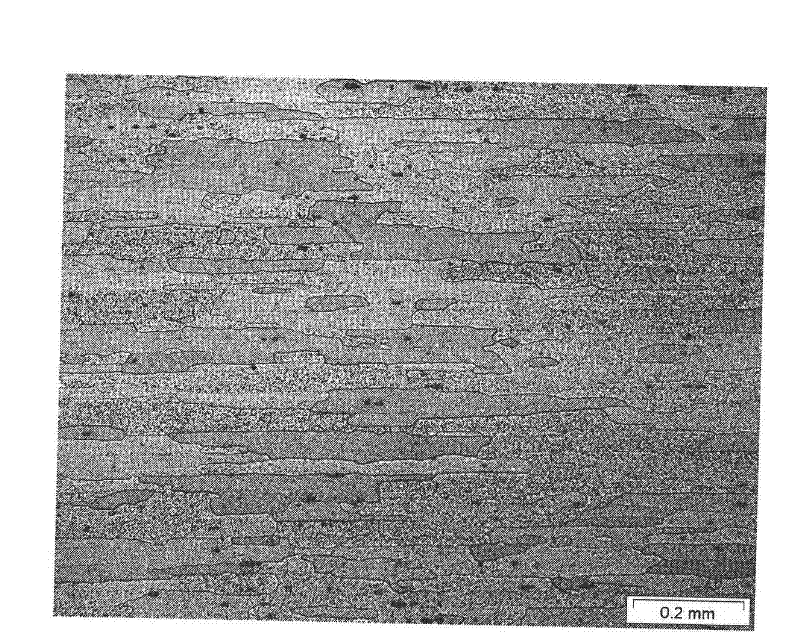Method for improving damage-tolerance property of 2,000-type aluminium alloy plate material
A technology of aluminum alloy plate and damage tolerance, which is applied in the field of metal material engineering, can solve the problems of narrow process window, complicated process technology, high equipment and operation technology requirements, and achieve energy saving, production efficiency improvement and fatigue crack rate reduction Effect
- Summary
- Abstract
- Description
- Claims
- Application Information
AI Technical Summary
Problems solved by technology
Method used
Image
Examples
Embodiment 1
[0030] Production of qualified 2E12 alloy ingots, whose alloy composition meets Cu 4.0-4.5%, Mg 1.2-1.6%, Mn 0.45-0.70%, Cr≤0.05%, Zn≤0.15%, Si≤0.06%, Fe≤0.12% , Ti≤0.10%. Pre-cold rolling preparation after hot rough rolling and coiling; high temperature softening treatment is required before cold rolling and during cold rolling, the deformation between the two softening treatments is not higher than 35%, and the uncoiling cold rolling is to 0.8mm~8.0mm For any specification, the cold-rolled product is subjected to solution treatment, then cold-deformed and straightened, and then naturally aged to a stable state.
[0031] Its process route and process parameters are shown in Table 1. In Table 1, each number represents a process route and its process parameters and product performance indicators.
[0032] Table 1: Process route parameters and properties of 2E12 alloy plates with specifications of 0.8mm to 8.0mm
[0033]
[0034]
[0035] The process route and process p...
Embodiment 2
[0041] Produce qualified 2024 alloy ingots, whose alloy composition meets Cu 3.8-4.9%, Mg 1.2-1.8%, Mn 0.30-0.90%, Cr≤0.10%, Zn≤0.25%, Si≤0.50%, Fe≤0.50% , Ti≤0.15%. After hot rough rolling, the blank is hot finish rolled to any specification between 0.8mm and 8.0mm, and after hot rough rolling and coiling, it is prepared before cold rolling; high temperature softening treatment is required before and during cold rolling, and two softening treatments are required The amount of deformation between passes is not higher than 35%. It is decoiled and cold-rolled to any specification between 0.8mm and 8.0mm. After the cold-rolled product is solution treated, it is subjected to cold deformation leveling and straightening; then it is naturally aged to a stable state.
[0042] Its process route and process parameters are shown in Table 3. In Table 1, each number represents a process route and its process parameters and product performance indicators.
[0043] Table 3 Process route pa...
Embodiment 3
[0051] Production of qualified 2000 series alloy ingots, whose alloy composition meets Cu 3.2-3.8%, Mg 0.8-1.2%, Mn 0.30-0.90%, Cr≤0.10%, Zn≤0.25%, Si≤0.50%, Fe≤0.50 %, Ti≤0.15%. Pre-cold rolling preparation after hot rough rolling and coiling; high temperature softening treatment is required before cold rolling and during cold rolling, the deformation between the two softening treatments is not higher than 35%, and the uncoiling cold rolling is to 0.8mm~8.0mm For any specification, the cold-rolled product is subjected to solution treatment, then cold-deformed and straightened, and then naturally aged to a stable state.
[0052] Its process route and process parameters are shown in Table 5. In Table 1, each number represents a process route and its process parameters and product performance indicators.
[0053] Table 5 Process circuit parameters and properties of 2000 series alloy plates with specifications of 0.8mm to 8.0mm
[0054]
[0055] As can be seen from the abov...
PUM
 Login to View More
Login to View More Abstract
Description
Claims
Application Information
 Login to View More
Login to View More - R&D
- Intellectual Property
- Life Sciences
- Materials
- Tech Scout
- Unparalleled Data Quality
- Higher Quality Content
- 60% Fewer Hallucinations
Browse by: Latest US Patents, China's latest patents, Technical Efficacy Thesaurus, Application Domain, Technology Topic, Popular Technical Reports.
© 2025 PatSnap. All rights reserved.Legal|Privacy policy|Modern Slavery Act Transparency Statement|Sitemap|About US| Contact US: help@patsnap.com



